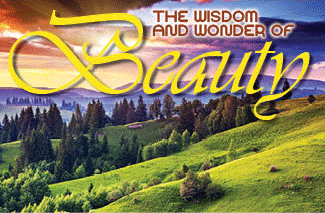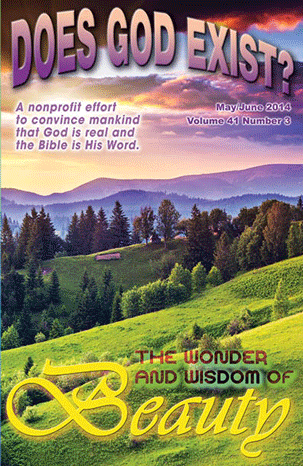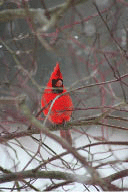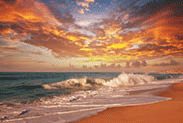
 Many years ago I was hiking in the Ontario wilderness, when I stopped to sit on a log from which I could see a lake in the distance. It was very quiet, and I was sitting very still, when suddenly a fox trotted onto a rock in front of me and stopped to clean himself and rest. Since I was sitting perfectly still and the wind was blowing from the fox toward me pushing my smell away from him, he did not realize that I was there. It was late summer, and the animal’s coat was beginning to change for the upcoming winter season. The fox's coat shimmered in the sunlight, and the range of colors in its fur was dazzling. I had never seen a wild fox in the north before and this animal's beauty astounded me. The encounter must have lasted three or four minutes before he happened to look my way. When he saw me, the fur rose on his neck and back making him appear larger, and displayed his colors even more than before. We stared at each other for a few seconds and then he bolted — running away from what I am sure he thought was a very ugly predator.
Many years ago I was hiking in the Ontario wilderness, when I stopped to sit on a log from which I could see a lake in the distance. It was very quiet, and I was sitting very still, when suddenly a fox trotted onto a rock in front of me and stopped to clean himself and rest. Since I was sitting perfectly still and the wind was blowing from the fox toward me pushing my smell away from him, he did not realize that I was there. It was late summer, and the animal’s coat was beginning to change for the upcoming winter season. The fox's coat shimmered in the sunlight, and the range of colors in its fur was dazzling. I had never seen a wild fox in the north before and this animal's beauty astounded me. The encounter must have lasted three or four minutes before he happened to look my way. When he saw me, the fur rose on his neck and back making him appear larger, and displayed his colors even more than before. We stared at each other for a few seconds and then he bolted — running away from what I am sure he thought was a very ugly predator.
In my house I have many things I have found in my rock hunting that are incredibly beautiful. They include a nautilus which is made of stunning pink and white mother-of-pearl, slices of volcanic rocks my mother-in-law collected from the western U.S., and beautiful purple fluorite crystals that came from southern Illinois and a volcanic area in Montana. You can buy books that deal with the extravagance of beauty in nature — the peacock’s tail, the colors of rain-forest frogs, or the colors of a chameleon. You can enjoy the fragrance of roses, the song of a wren, the courtship dance of Sandhill cranes, the flickers of fireflies, and many more. Philosophers have pondered the meaning of beauty for all of recorded history. Is beauty an intrinsic feature of the physical world, like mass? Is beauty an artifact of human perception? Does it arise solely from the operation of physical laws? How does it generate a quality so pleasing to us? Is it by design or are we designed to interpret it that way? Why do we strive to create beauty?
From a naturalistic, evolutionary viewpoint all of these things must be explained by chance or natural selection. The chemical makeup of minerals does different things to the light, producing the colors. Things like the fox's fur, the peacock’s tail, and the rain forest frog's colors may be camouflage to avoid being eaten, or ways of selecting the most fit mate for procreation. The songs of wrens and whales are communication devices that help locate mates and warn competition to stay away from their territory. These are certainly some of the fringe benefits of beauty, but they are inadequate explanations for many of the cases that we see in the natural world.
 The first problem with naturalistic arguments for beauty is that most animals are color-blind, and camouflage has more to do with pattern than with color. The zebra, for example, is essentially black and white, but is marvelously camouflaged for its habitat. In cases like the chameleon, where the main predators have color vision, the idea of color being an aid to concealment may have validity. In many cases the extravagant color makes camouflage more difficult. The red of the cardinal makes it easy to see year-round. In ocean reefs color is frequently the main way to locate various forms of marine life.
The first problem with naturalistic arguments for beauty is that most animals are color-blind, and camouflage has more to do with pattern than with color. The zebra, for example, is essentially black and white, but is marvelously camouflaged for its habitat. In cases like the chameleon, where the main predators have color vision, the idea of color being an aid to concealment may have validity. In many cases the extravagant color makes camouflage more difficult. The red of the cardinal makes it easy to see year-round. In ocean reefs color is frequently the main way to locate various forms of marine life.
The second problem that beauty provides for those who believe in naturalism as the sole cause of beauty is the extravagance of design in the world around us. The opulence of the nautilus with its mother of pearl shell showing cream, pink, blue, and green cannot be explained by camouflage, because most of the shell's beauty is on the inside. It can only be seen by cutting the shell open. Most flowers are far more complex than they need to be. The attraction of pollinators is carried on efficiently by pheromones which attract insects by the smell, not by the opulent color or the complex design of the flower itself. Bleeding hearts and irises have a flair that is unnecessary just for a pollinator to be attracted to the flower. Who can look at an orchid and believe all of that flair is necessary to produce pollination, especially when one realizes that the time when the flower is at its maximum in most cases is not when the pollinator is most active.
 The third problem with naturalistic explanations of beauty is that many of the most beautiful things we see are not related to living things, and thus cannot be explained by natural selection. We enjoy the beauty of sunsets, the auroras, the blue of glaciers, and the colors of geodes containing amethyst, agate, jasper, or chalcedony. These things have to be explained by chance since no natural, biological law will explain their formation. Some beauty is seen only with an electron microscope — such as the intricate patterns seen in diatoms.
The third problem with naturalistic explanations of beauty is that many of the most beautiful things we see are not related to living things, and thus cannot be explained by natural selection. We enjoy the beauty of sunsets, the auroras, the blue of glaciers, and the colors of geodes containing amethyst, agate, jasper, or chalcedony. These things have to be explained by chance since no natural, biological law will explain their formation. Some beauty is seen only with an electron microscope — such as the intricate patterns seen in diatoms.
 If you believe that the universe is only a machine grinding away for billions of years, then beauty has no intrinsic value. It is simply a commodity to be used up to suit our appetites. Nothing in nature has value except as it is useful to suit our appetites now or in some future generation. Proponents of this view would ask what value a wilderness has if you cannot drill for oil, or if it does not yield so many board feet of lumber. People with this view would ask why we should protect wild salmon when we can grow them in vats. They would refuse to worry about non-human species.
If you believe that the universe is only a machine grinding away for billions of years, then beauty has no intrinsic value. It is simply a commodity to be used up to suit our appetites. Nothing in nature has value except as it is useful to suit our appetites now or in some future generation. Proponents of this view would ask what value a wilderness has if you cannot drill for oil, or if it does not yield so many board feet of lumber. People with this view would ask why we should protect wild salmon when we can grow them in vats. They would refuse to worry about non-human species.
 Those of us who believe that the universe was created by God would suggest that beauty is something the creator is very fond of and on which he places great emphasis. Beauty calls us out of ourselves. It provides standards for art, science, language, and literature. Beauty inspires affection and gratitude. We need to rejoice in beauty and take care of it. “See how the lilies of the field grow. They do not labor or spin. Yet I tell you that not even Solomon in all his splendor was dressed like one of these” (Matthew 6:28 – 29).
Those of us who believe that the universe was created by God would suggest that beauty is something the creator is very fond of and on which he places great emphasis. Beauty calls us out of ourselves. It provides standards for art, science, language, and literature. Beauty inspires affection and gratitude. We need to rejoice in beauty and take care of it. “See how the lilies of the field grow. They do not labor or spin. Yet I tell you that not even Solomon in all his splendor was dressed like one of these” (Matthew 6:28 – 29).
Picture credits:
Cover photo: Cover and title background: © Leonid Tit. Image from BigStockPhoto.com.
Roland Earnst.
© dekzer007. Image from BigStockPhoto.com.
©Madlen. Image from BigStockPhoto.com
©Andrushko Galyna. Image from BigStockPhoto.com
